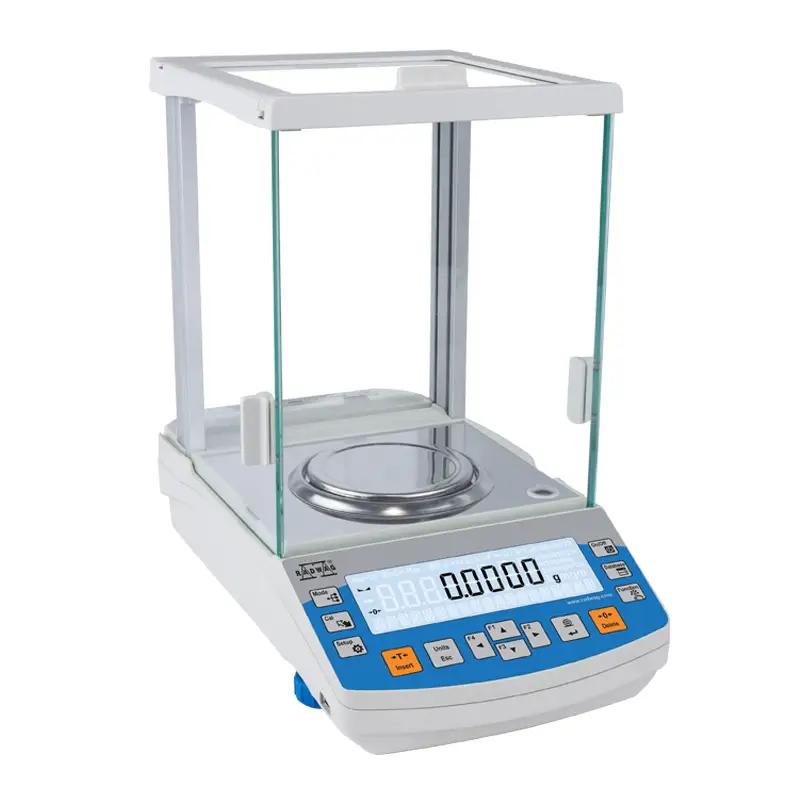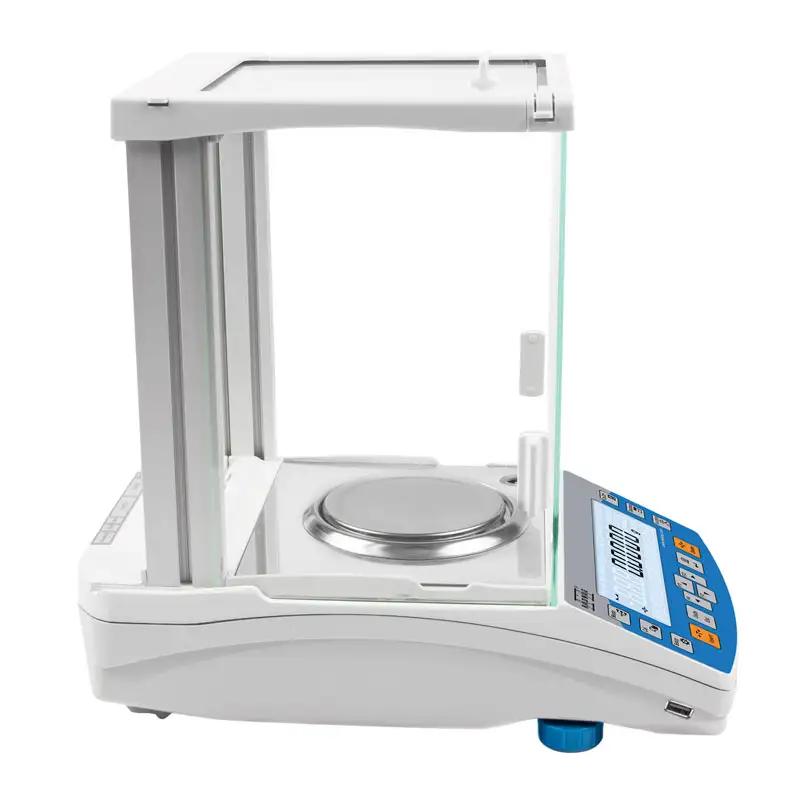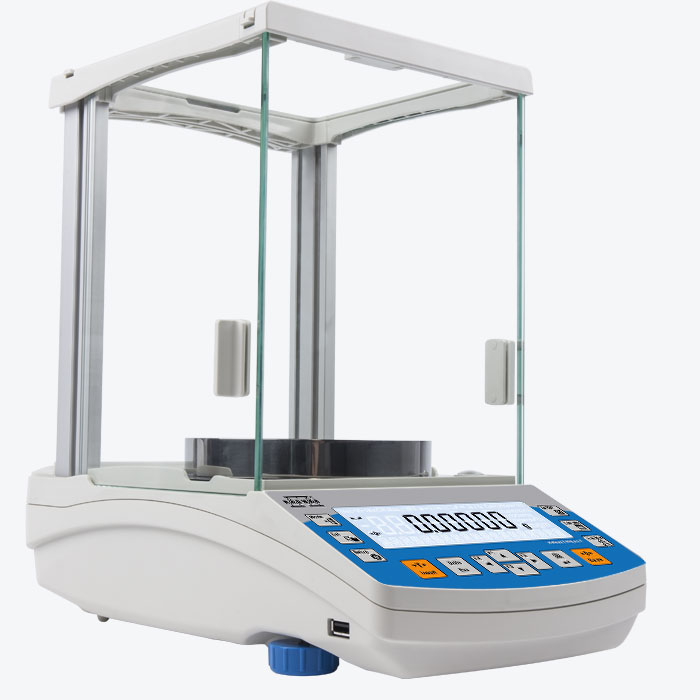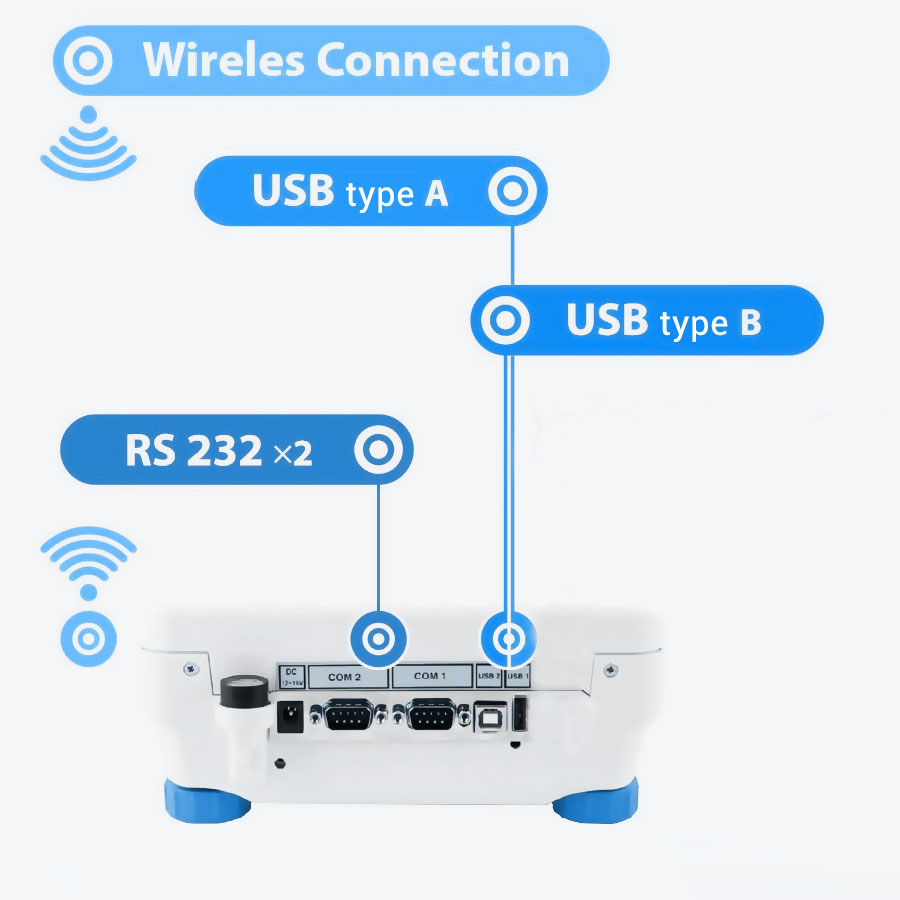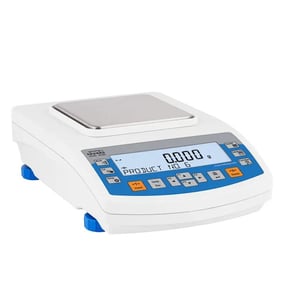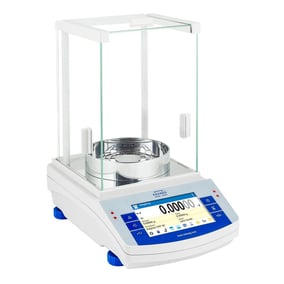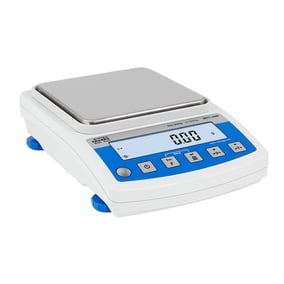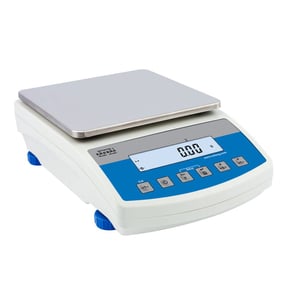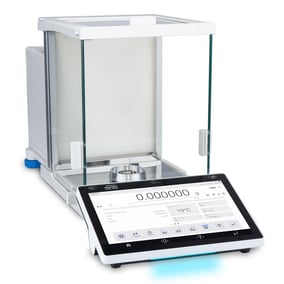AS R2 Series Analytical Balance AS R2
The AS.R series represents a new standard level for analytical balances. It features modern, readable LCD display which allows a clearer presentation of the weighing result. The display has a new text information line presenting additional messages and data, e.g. product name or tare value.
Overview
The AS R2 analytical balance is distinguished by a wide range of modern constructional and system solutions that ensure reliability, precision, and measurement accuracy while simplifying everyday operations.
The latest AS R2 analytical balance boasts a spacious weighing chamber with open-door clearance, providing easy access to the weighing pan and enabling the use of laboratory glassware of various sizes. Its newly designed aluminium base guarantees the stability of the weighing system. With the Dual-CLICK system, the weighing chamber can be assembled and disassembled without tools, while the guide design for weighing chamber panes (without rims) facilitates easy cleaning.
Innovative construction solutions enhance the durability and reliability of the AS R2 balance, even during long-term operation. The AS R2 balances also have a front-located levelling device that simplifies the level control process. The reduced quantity of adjustable supporting points (2 points) makes levelling operation easier. The modernised internal adjustment system ensures accurate indications even in extremely unfavourable conditions.
The balances are designed with an LCD display that ensures a clear presentation of the weighing result. Users can directly access functions and databases through the following keys:
- Database: allows for direct access to databases
- Function: allows for direct access to essential functions
- F1-F4: programmable function keys and menu navigation keys
The AS R2 PLUS analytical balances use pictograms to signal their operating mode, computer connection, weighing and service functions. They display an expanded range of weighing units and a dedicated status bar to display additional messages such as product name or tare value. Real-time mass measurement is also presented using a bar graph.
The modernised internal adjustment system ensures accurate indications even in extremely unfavourable conditions.
Technical Data
-
BrandRadwag
-
Capacity60g - 520g
-
Electrical12V DC
-
Readability0.01 mg - 0.1 mg
Support & FAQs
At Thermoline, we strive to supply helpful customer support to ensure that you get the most out of our products. We are committed to providing whatever support our customers need, wherever they are in the world. If you can't find your solution in the below FAQs or Knowledge Base, please contact our friendly support team.
- What is laboratory balance?
A laboratory balance is a precision instrument used to measure the mass of an object or sample. It is designed for use in laboratory settings and is typically more accurate and precise than a standard scale.
A laboratory balance typically consists of a weighing platform, a load cell to measure the weight of the sample, and a digital display that shows the result. The load cell converts the force of gravity acting on the sample into an electrical signal, which is then displayed on the digital display.
- What is the difference between a scale and a balance?
While scales and balances are both used as weighing devices, their intended purposes vary slightly.
A scale is used to measure weight (weight = the force of gravity on an object on the scale), whereas a balance is used to measure mass. (mass = the amount of matter in an object). A scale is a general-purpose measuring instrument that gives an estimate of the weight of an object. They typically use spring mechanisms to measure weight and have a lower precision compared to laboratory balances.
A balance, on the other hand, is a highly precise instrument used in laboratory settings. Balances use load cells to measure weight and provide a much higher level of accuracy compared to scales. The readout on a balance is usually digital, and the results can be displayed in various units of measurement, including grams, kilograms, and ounces.
- What are the appropriate conditions for a laboratory balance?
- You should first install the balance in a workroom free of vibrations and shakes and where there is no air draft or dust. You want to ensure that the ambient temperature is between +15°C and +35°C while ensuring that the relative humidity is not above 80%. Place the balance either on a robust-design table or on a wall bracket that is both distant from heat sources and insusceptible to vibrations.
- What is the difference between a precision balance and an analytical balance?
Precision balances and analytical balances are both types of laboratory balances, but they differ in their level of precision and the types of applications for which they are used.
A precision balance is a type of laboratory balance that provides accurate measurements within a range of ±0.1 to ±0.01 grams. Precision balances are typically used for routine weighing tasks, such as determining the mass of chemicals for routine laboratory experiments, or for checking the weight of small parts in industrial settings.
An analytical balance, on the other hand, is a highly precise type of laboratory balance that provides accurate measurements within a range of ±0.0001 grams. Analytical balances are used for more demanding applications, such as determining the mass of samples for highly accurate chemical analysis, or for weighing minute quantities of substances in medical and pharmaceutical research.

